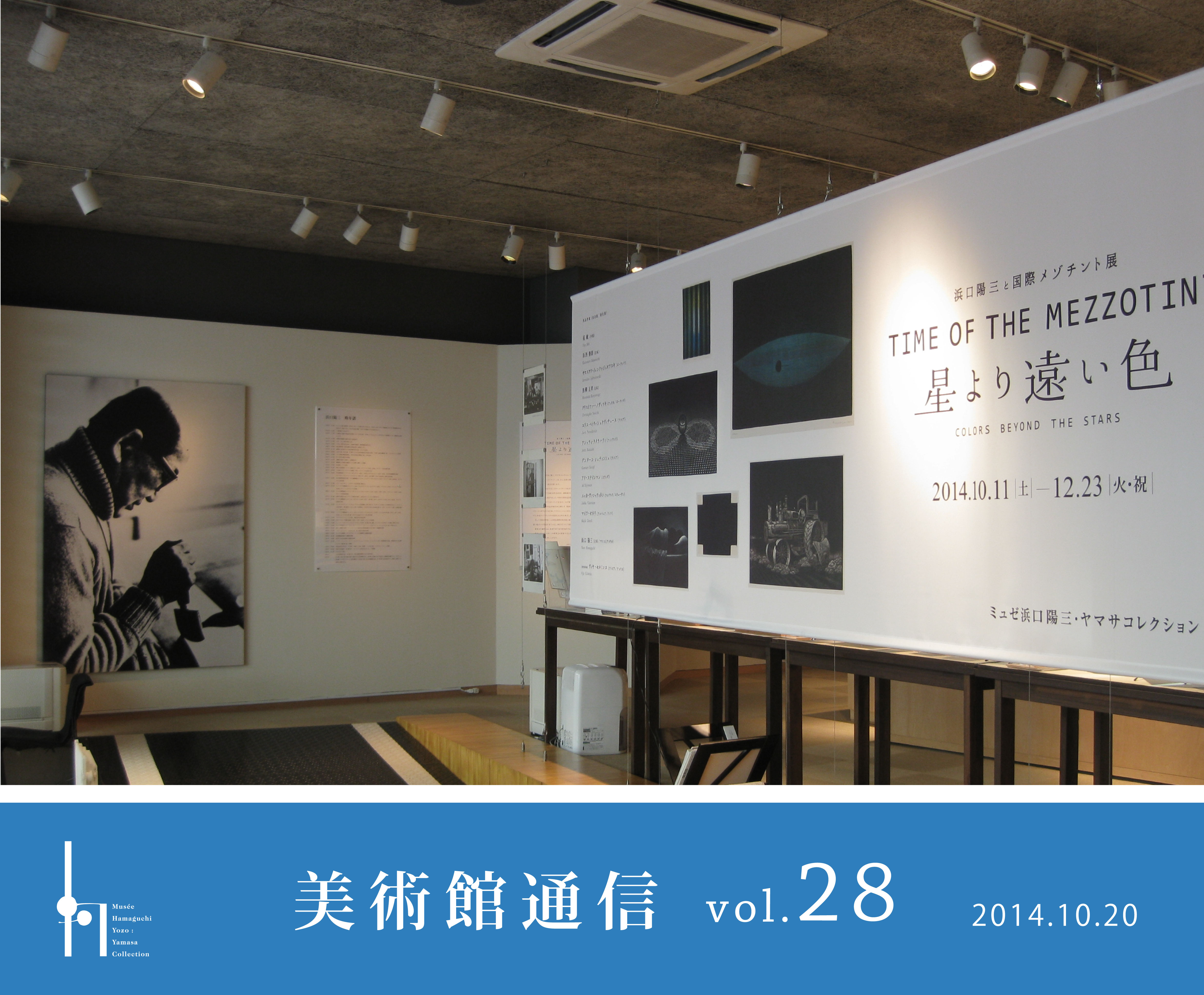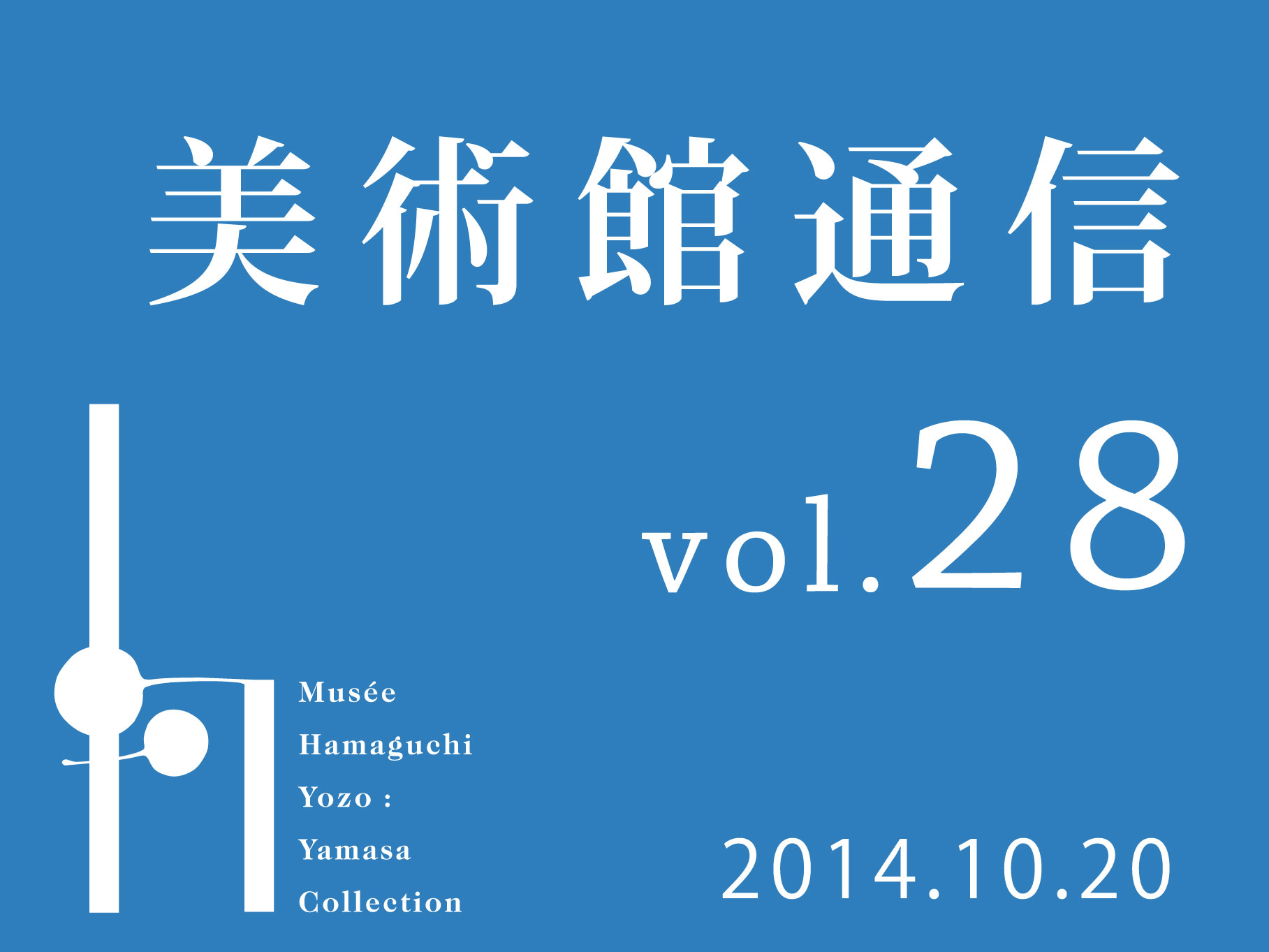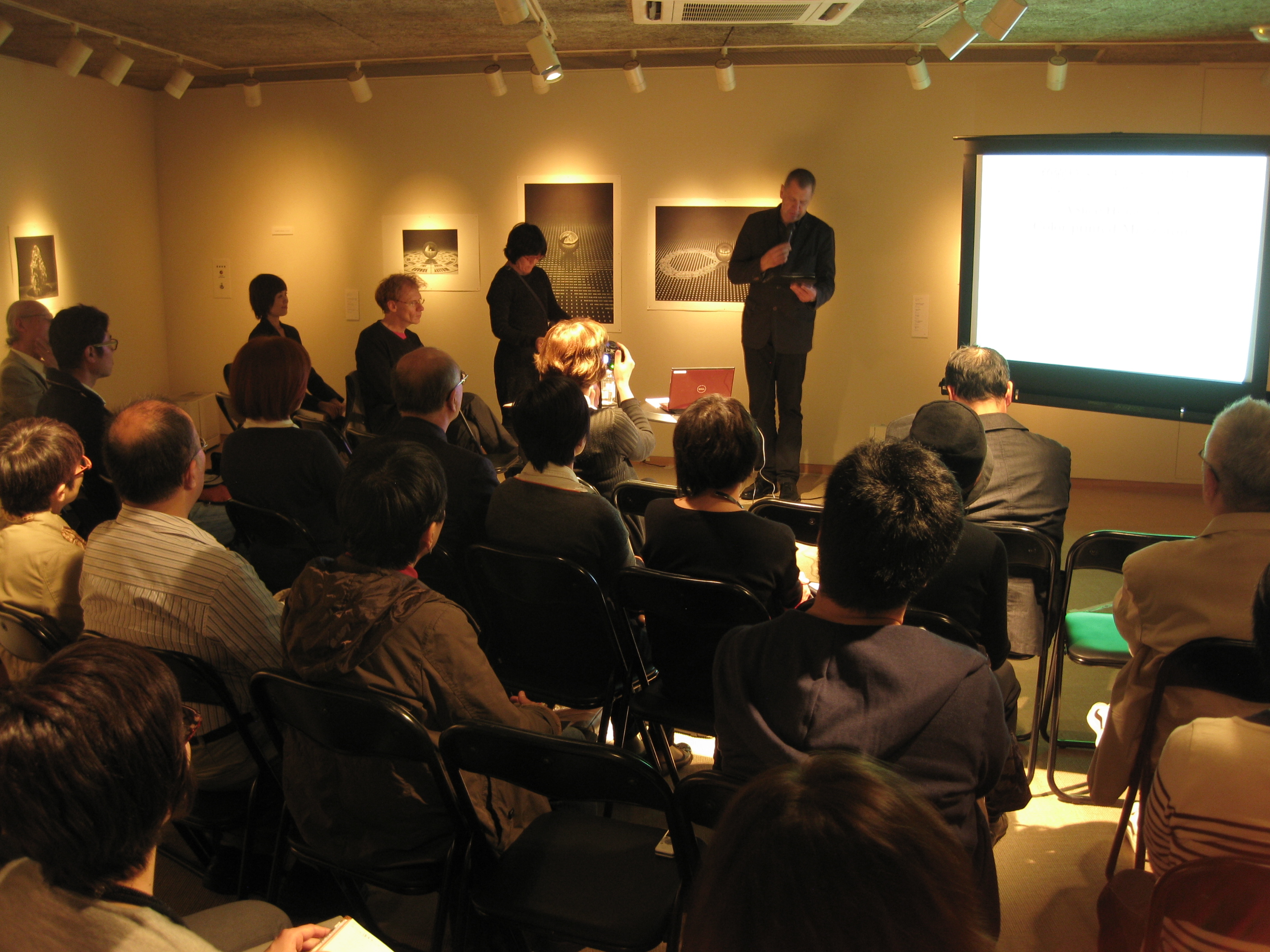美術館通信 vol.28 記念講演会 『カラーメゾチントの歴史』 2014年10月20日(月)

| イベント情報 | |
|---|---|
| 講師 | アド・ステインマン Ad Stijnman(版画家、版画技法史家) |
| 日時 | 2014年10月20日(月) |
| 定員 | 50人 |
| 参加費 | 入館料+200円 |
17世紀にオランダで発明されたメゾチント技法が、
芸術表現として今日に至る流れを、色彩版画に限定して、
貴重な画像と共に解説していただきます。
講演者は、2012年にイギリスで刊行された銅版画技法史の著者であり、
展覧会顧問のステインマン氏です。

|
「カラーメゾチントの歴史」講演のあらまし
現在「メゾチント」と呼ばれている版画技法は、最初からその名で呼ばれたわけではありません。長い西洋の印刷史の中で、何度か出現と衰退を繰り返し、20世紀後半に芸術の表現として世界に広まりました。オランダ在住のアド・ステインマン氏は、書誌学的調査に加え、作家ならではの経験に基づいた分析を加え、銅版画の歴史を探っています。この夜は、展覧会を飾る記念講演会でした。展覧会企画者のお一人、ラトビア在住の作家グンタース・シェティンシュ氏によるご挨拶があり、続いてアド・ステインマン氏が、浜口陽三にちなんで色刷りのメゾチントについて講演をしました。その一部を簡単に紹介いたします。
*講演内容の著作権はアド・ステインマン氏にありますので転載はご遠慮ください。詳細は展覧会図録掲載のエッセイをご覧下さい。
The printmaking technique we now call ‘mezzotint’ has been mainly used for portraits and reproductions of paintings. It did not have that name from the beginning and it has emerged and declined several times in the long history of European printmaking.
Dr. Ad Stijnman, living in the Netherlands, researches the history of engraving and etching techniques from examples of original prints and technical manuals, not only carrying out bibliographical studies of a huge amount of literature, but also analyzing prints based on his experience as a print artist. About the mezzotint technique he judges book illustrations that show the kinds of tools used and the manufacturing processes depicted.
In the evening we had a memorial lecture for the exhibition ‘Time of the Mezzotint’. First Latvian artist Guntars Sietiņš made a greeting. He was one of organizers of this project. Next Ad Stijnman focused on the history of color mezzotint in commemoration of Yozo Hamaguchi in his lecture. This is a summary of the lecture.
* Concerning the details of this print history please read the essay in the exhibition catalog. Ad Stijnman has the copyright of the lecture, so you are not allowed to reprint it.

|
最初のメゾチントが作られたのは1642年ですが、色刷りの作例が見つかるのは四十年以上後のことです。1688年から1697年にかけて、ヨハネス・ティラー(1648-1709?)が監督する印刷工房では、300から350点の銅版画を、すべて「ア・ラ・プペ」(一版を色分けする、多色刷りの一方法)で制作しました。この工房のいくつかの版は、ロッカー又はルーレットが使われている部分があるので、多色刷りメゾチントの最初の例と見なせるでしょう。 アムステルダムの出版業者は、1695年よりエッチングにティラーのア・ラ・プペを使うようになり、いくつかのメゾチント技法でも一色刷りかア・ラ・プペによる多色刷りをしました。彼らを通じて18世紀のヨーロッパに色彩銅版画(正確には凹版色刷り方法)が普及しました。 ル・ブロンの方法は、あまりにも複雑な工程を必要としたので広く普及せず、18世紀頃に廃れてしまいました。フランスで1837年、ゴデフロイ・エンゲルマンは、工業用のリトグラフ三色刷りで特許を取得しました。これが19世紀におけるカラーの大量印刷の基礎となり、今日、オフセット印刷やカラーコピー、プリンターに使われているカラーシステム「CMYK(シアン、マゼンタ、イエロー+キーブラック)」へ発展したのです。 メゾチントは19世紀を通じて制作されましたが、流行は次第に衰退しました。しかしながらドイツ、フランス、イギリスにいた数人の版画家が、20世紀初期、彼らの芸術作品にこの技法を用いました。 第二次世界大戦後、パリには再び世界中の芸術家達が集まりました。スタンリー・ウイリアム・ヘイター(1901-1988)は1950年にパリに戻り、ヨゼフ・ヘクトと共に1927年に開設した版画工房、アトリエ17を再開しました。彼はそれ以前、アメリカに滞在していた時に、独特の1版多色刷りの方法を開発していました。この技法はヘイター方式(海外ではviscosity color printingと呼ばれています)として広く知られるようになり、芸術的銅版画の世界に再び色彩をもたらしました。 浜口陽三は、1953年にパリに戻り、1954年までには彼なりの方法でメゾチント作品を制作し始めました。彼はさらに2版から4版によるそれぞれ違う色の版を刷り重ねて1つの絵を完成させるという色刷りも始めています。ル・ブロンの印刷は絵画の色を正確に再現するための複製技術でしたが、浜口の技法は純粋に芸術を創造するためのものでした。黄、赤、青、最後に黒の順に色を重ねることによって、暗く、神秘的な雰囲気を表現しました。浜口とマリオ・アバチ(1921-2009)によって、1960年代には国際的にメゾチントの復興をみたのです。 *分かりやすく紹介するため、英語を逐語訳せず、専門用語を翻案した部分には()内に入れました。またヨーロッパと日本での銅版画の認知度を考慮し、冒頭の紹介文は、英文と日本語で少々内容を変えました。ご了承ください。 |

|
Although the first mezzotint print was created in 1642, we have to wait for more than four decades to find mezzotints printed in colors. In 1688–1697 Johannes Teyler (1648-1709?) oversaw a printshop that produced some 300–350 plates that were all inked in multiple colors with the à la poupée method. Some of the plates from this studio were prepared with a rocker or roulette similar to how Ludwig von Siegen (1609-1676), the inventor of the mezzotint technique and can therefore be considered the first multi-color printed mezzotints. Amsterdam print publishers started using Teylerʼs manner à la poupée for printing etchings in colors from 1695 and also issued some mezzotints inked either in one color or à la poupée. Through them color intaglio printing became common in Europe in the 18th century. Shortly after 1700, the German painter Jacque-Christoph Le Blon (1667-1741) living in Amsterdam had developed a manner to reproduce an oil painting in accurate colors. His invention consisted of over-printing three mezzotint plates inked in blue, yellow and red ink (in that order), eventually also starting with an extra black plate. The combination of these colors printed in varying intensities on the white of the paper created all desired hues. After Le Blonʼs death, his former apprentice, Jacques-Fabien Gautier Dagoty (1716-1785) produced a number of anatomical publications illustrated in colors in this technique. Le Blonʼs method was too complicated to become widely used and the process died out c.1800. A three-color manner for industrial lithographic printing was patented by Godefroy Engelmann (1788-1839) in France in 1837. This stood at the base of a huge production of color prints in the 19th century and it developed to the CMYK (Cyan, Magenta, Yellow + a black Keyplate) color system that is used in offset printing, color photocopiers and computer printers today. Mezzotints were produced throughout the nineteenth century, but their popularity declined. Nevertheless, several printmakers – in Germany, France and England - used the manner for their art work in the first decades of the twentieth century. After World War II, Paris once again attracted artists from all over the world. Stanley William Hayter returned there in 1950 and revived the Atelier 17 that he had founded together with Jozef Hecht in 1927. During his stay in the US he had developed his idiosyncratic manner of color printing. This technique became more popularly known as ‘viscosity color printing’ and it brought color back to artistic printmaking. Yozo Hamaguchi returned to Paris in 1953 and by 1955 he began making mezzotints in his own manner. He also began printing his plates in color by over-printing two to four differently inked plates that together comprised one image. Le Blon printed his images to create accurate color hues of the paintings that he reproduced. Hamaguchi used his technique purely for artistic works. His order of printing was yellow, red, blue and finally black, which created prints with a dark, atmospheric appearance. With Hamaguchi and Mario Avati (1921-2009), the international mezzotint revival of the 1960s began. In this international exhibition Time of the Mezzotint a number of color mezzotints are exhibited. In Japan, quite a number of mezzotint artists are active today, developing new rocking machines and creating new artworks. |

地下展示会場 |
|

巡回企画者・グンタース氏の挨拶 |
|

講演後のお茶会 |
|


